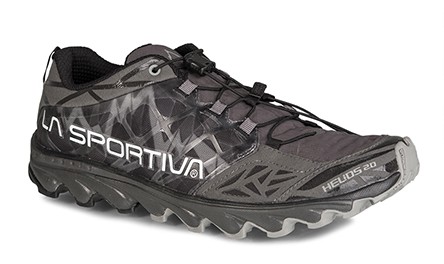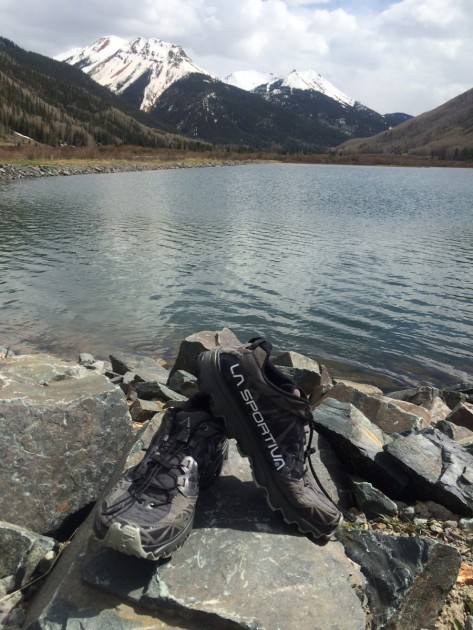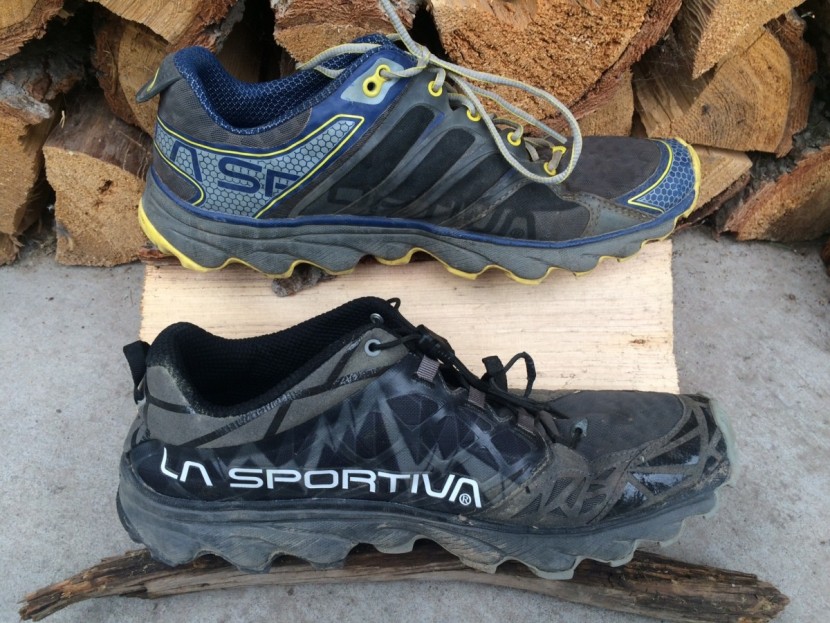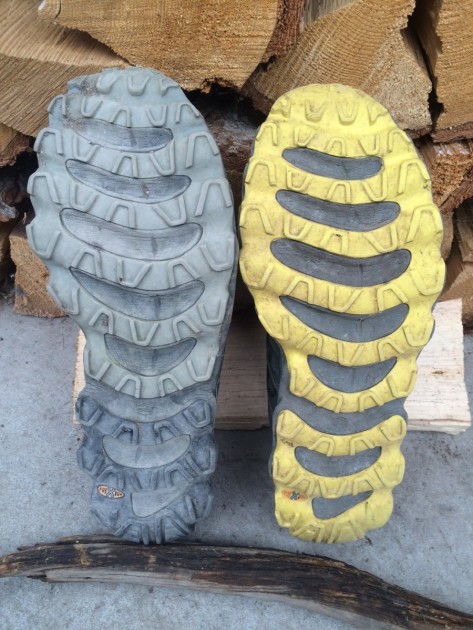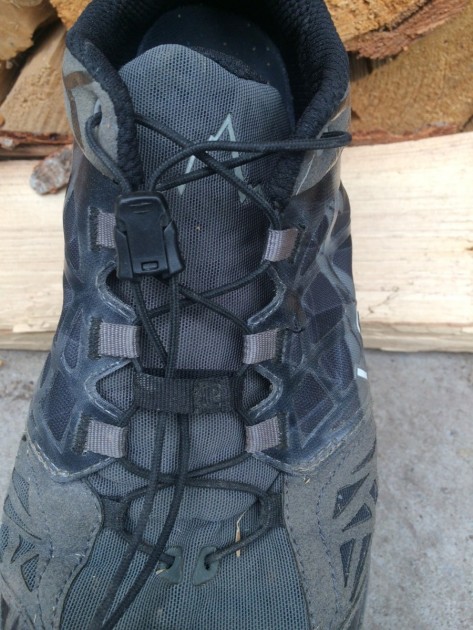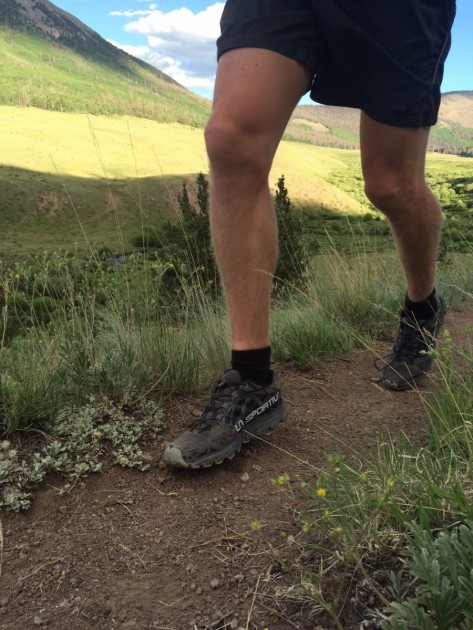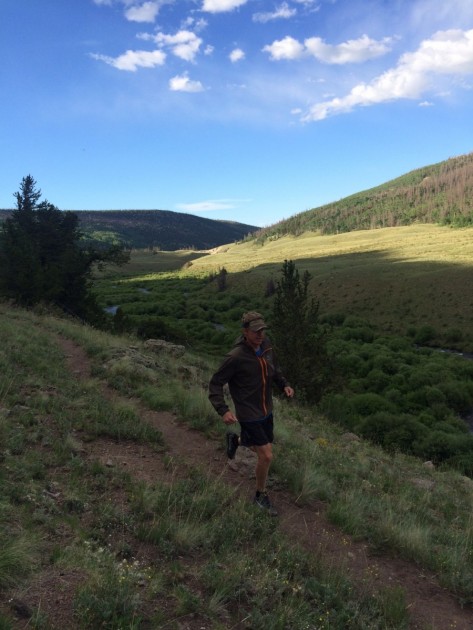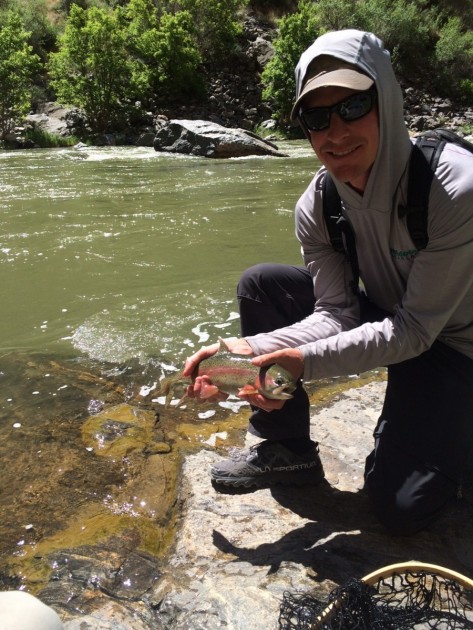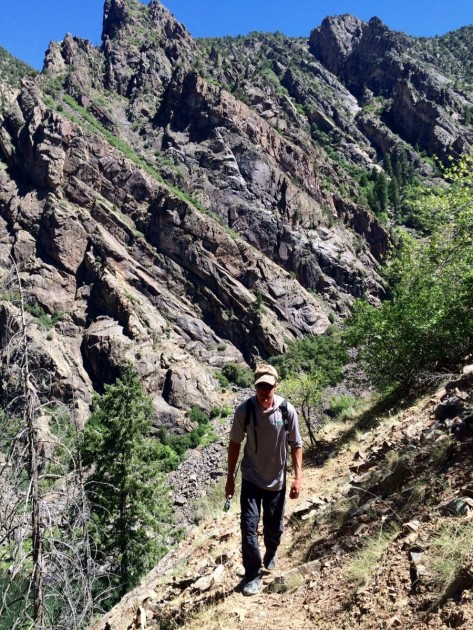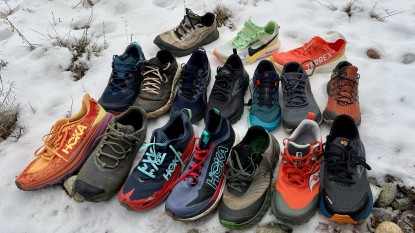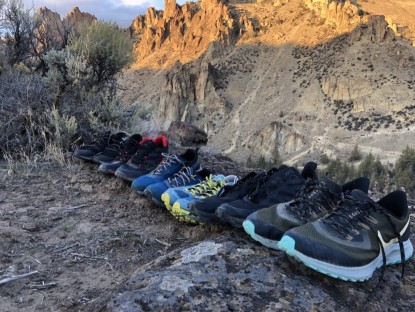La Sportiva Helios 2.0 Review
Our Verdict
Our Analysis and Test Results
The Helios 2.0 remains unchanged for 2017, although it seems like this shoe is due for an update. While we have reviewed the 2.0 here, it is worth noting that the Helios SR is virtually the same shoe, but uses sticky rubber on the outsole and costs $10 more. This shoe remains the lightest in our review, by a relatively wide margin. It incorporates a quick lace system, that unfortunately lacks a garage to stuff them into like the Salomon Speedcross. We found the extra lace tails to be long and annoyingly flappy. This is the only shoe in the review that didn't have a very supportive heel cradle and is probably where some of the extra weight savings came from. We have to admit that we didn't notice that the cradle was missing while out on the trail.
While we awarded it our Top Pick for Light and Fast in a previous year's review, we noticed that compared to the competition, we felt that we spent more time being careful about where we put our feet while wearing this shoe because we were worried about damaging our feet. Increased awareness is not a bad thing, but compared to the feel of our best overall trail running shoe, the Nike Terra Kiger 4, we just weren't able to confidently charge over gnarly terrain in these shoes. We still like them as a short run option, for uphill only running, and for scrambling, but no longer considered them seriously for long runs, or for rough downhill terrain.
Foot Protection
We awarded the Helios 2.0 the lowest score for foot protection, 2 out of 10 points. It is made with only a very thin 15mm of midsole cushioning underneath the foot and no rock plate. Not only that, but there are many cut outs in the wave patterned outsole that leaves lots of the soft midsole foam exposed to blows from roots or rocks. We felt that we had to be very careful of where we stepped while running in these shoes, especially after feeling the pain of taking a couple of rocks directly to the middle of our foot. The upper protection is a bit improved in this second version, adding felt overlays to areas of high abrasion where we experienced rips in the mesh last year. The bottom line, however, is that these are very sensitive shoes with minimal protection for the feet. The second least protective shoe in our review, the Altra Superior 3.5 has a lot more underfoot cushioning by comparison. However, neither of these shoes allowed us to charge the rough terrain as we could in a standard traditional trail runner like the Nike Air Zoom Wildhorse 4.
Traction
We enjoyed the sticky FriXion rubber on the bottom of these shoes for a few things like scrambling and scurrying around on rocks, but in general found the depth of the lugs to be lacking, and found that the rubber was soft and relatively quick to wear down. While the wave patterned outsole adds significant depth to the traction due to the deep cutouts, the actual lugs themselves are very shallow, and not designed as aggressively as on a shoe like the Saucony Peregrine 7. That said, they certainly shined on rock and even wet rock, which is why they still ended up scoring higher than Altra Lone Peak 3.5.
Stability
With a very low stack height of only 15mm underfoot and only 4mm of heel-toe drop, we found these to be a very stable ride. We also found that their narrow profile and extremely soft midsole allowed a ton of flex and movement of the shoe's platform. They hugged the foot better than any other shoe, and this held our foot in place better than almost any other shoe. Naturally, we ranked them near the top of this metric, on par with the Nike Terra Kiger 4 as well as the Altra Superior 3.5.
Comfort
These shoes are pretty darn comfortable, right up there with the top contenders in our review. Worth noting is that this model runs about a half size small, so be sure to size up. Even with a half size larger shoe than we normally wear, these shoes were the most snug of any that we tested. Initially, this was snug in a good way, but after many days out running in these shoes, we started to feel like the snugness caused a few more rubs and friction points than in the best shoes we tried. We didn't experience blisters or discomfort, but couldn't rate them up there with the best. As such, they ended up ranked a tier below the Terra Kiger 4, roughly on par with Inov-8 Roclite G 290 and the low to the ground New Balance Vazee Summit v2. Like in past years, they also struggled in our water test. While they were middle of the pack regarding amount of water absorbed, they were the worst shoe in the test for quickly shedding water after the five-minute jog. We still find this odd considering that La Sportiva advertises them as quick drying, but we think is due to the type of fabric used inside the upper.
Weight
Weighing in at a featherweight of only 17 ounces for a pair of size men's 11.5 (we had to size up half a size for these shoes), the Helios 2.0 are by far the lightest shoe in this review. It is noticeable when you put them on and go for a run! They are two whole ounces lighter than the previous version and are close to three ounces lighter than the next closest competitor, the New Balance Vazee Summit v2. Where lightness is the most important factor, like running uphill, these shoes are the ones to grab.
Sensitivity
Without a doubt, these are the most sensitive low-profile shoes in our review, with only the Altra Superior 3.5 even coming close. With no rock plate and only 15mm of soft EVA foam as cushioning under the forefoot, there is less between the ground and your foot than any other shoe. In short, you can feel every little twig, root, or rock on the trail. This certainly gives one an incredibly natural feel, but at the same time requires feet of steel to be able to withstand running at high speeds on rougher terrain. 10 out of 10.
Best Applications
The Helios 2.0 is advertised as a shoe for all conditions, but we feel like it will serve one better as a part of their quiver and not as an everyday option. It would especially shine at uphill only running and races and does a pretty good job of scrambling. We don't think it offers enough protection for full speed running on technical, rocky terrain, or off-trail downhills. By the end of the review period, we will admit that we enjoyed it the most as a very minimalist, natural feeling hiking shoe.
Value
The Helios 2.0 will cost you $125 retail, and this makes it about average for the selection of quality trail shoes this year. Since we feel like it is such a specialty contender, we are not sure that this presents a great value compared to bombproof everyday trainers like The North Face Ultra Endurance. For those who can drop the money for the perfect shoe to run the Pikes Peak Ascent, then you will be happy with your purchase, but for other uses, we don't think the value is super great here.
Conclusion
The Helios 2.0 is a unique shoe because it is far lighter and more sensitive than any other shoe in this review. It does not have much protection for the feet, and therefore does not lend itself well to difficult terrain or very long runs. But for those who love a minimalist, low-drop shoe that allows your feet to feel the trail, this is a worthy option to check out.


